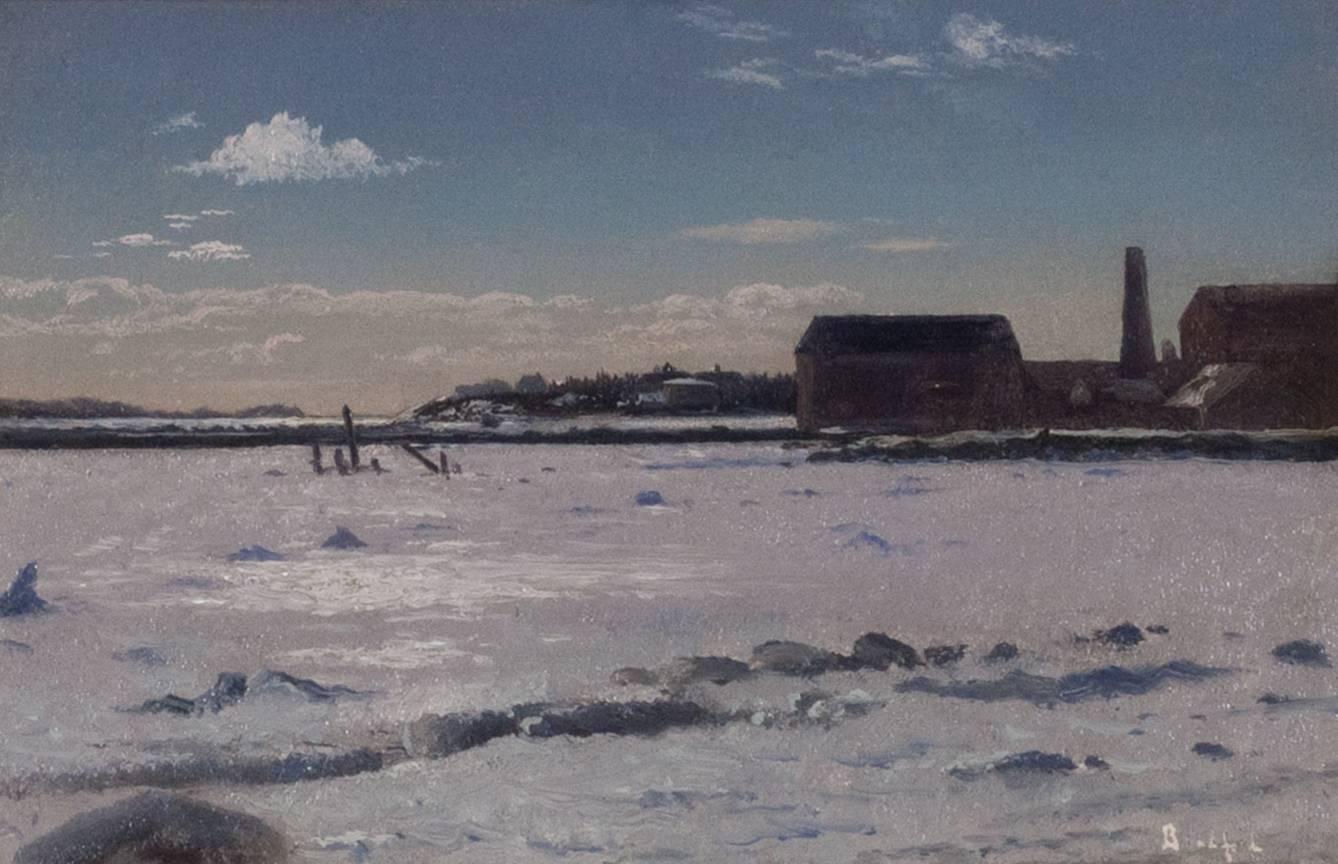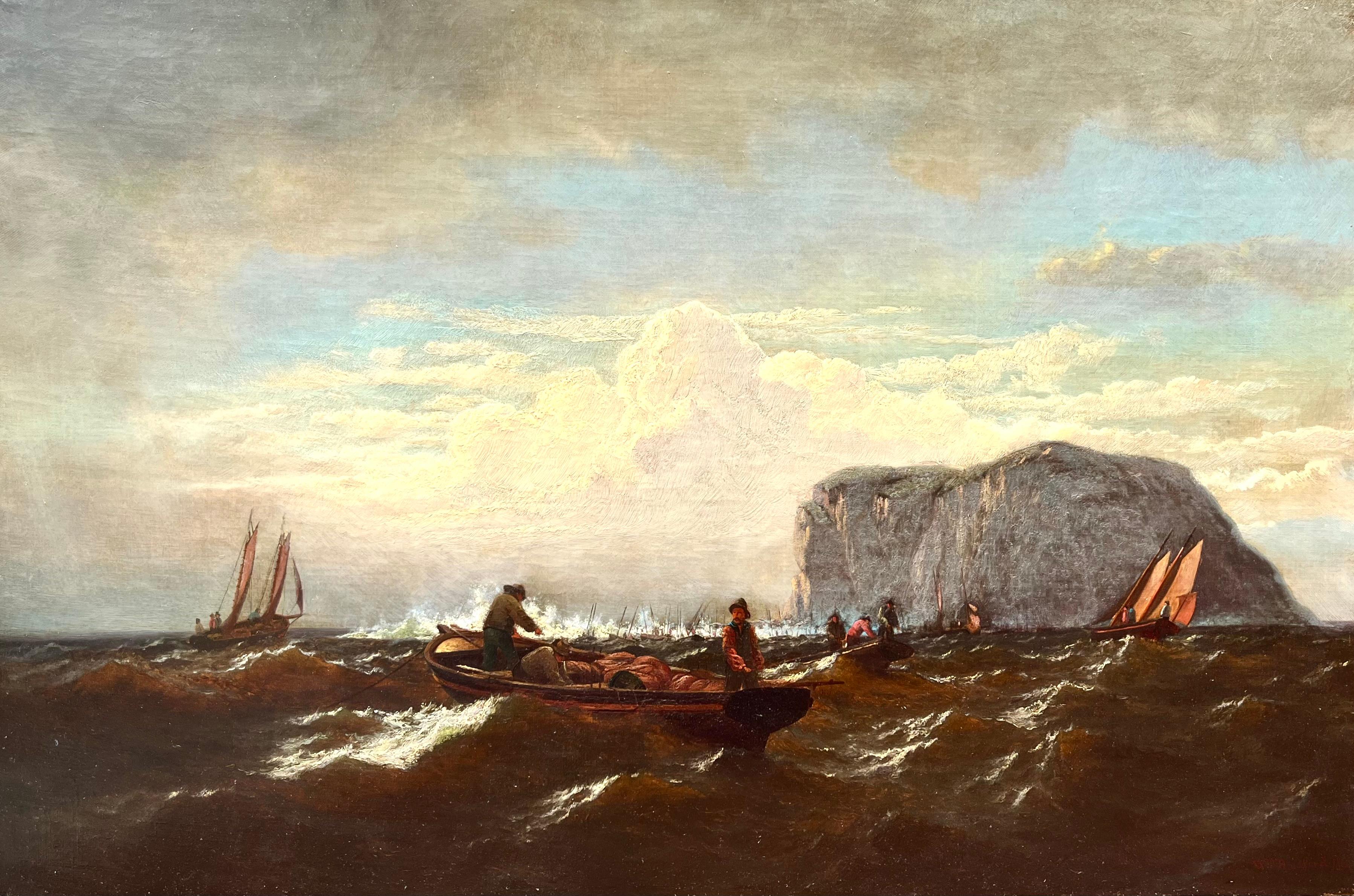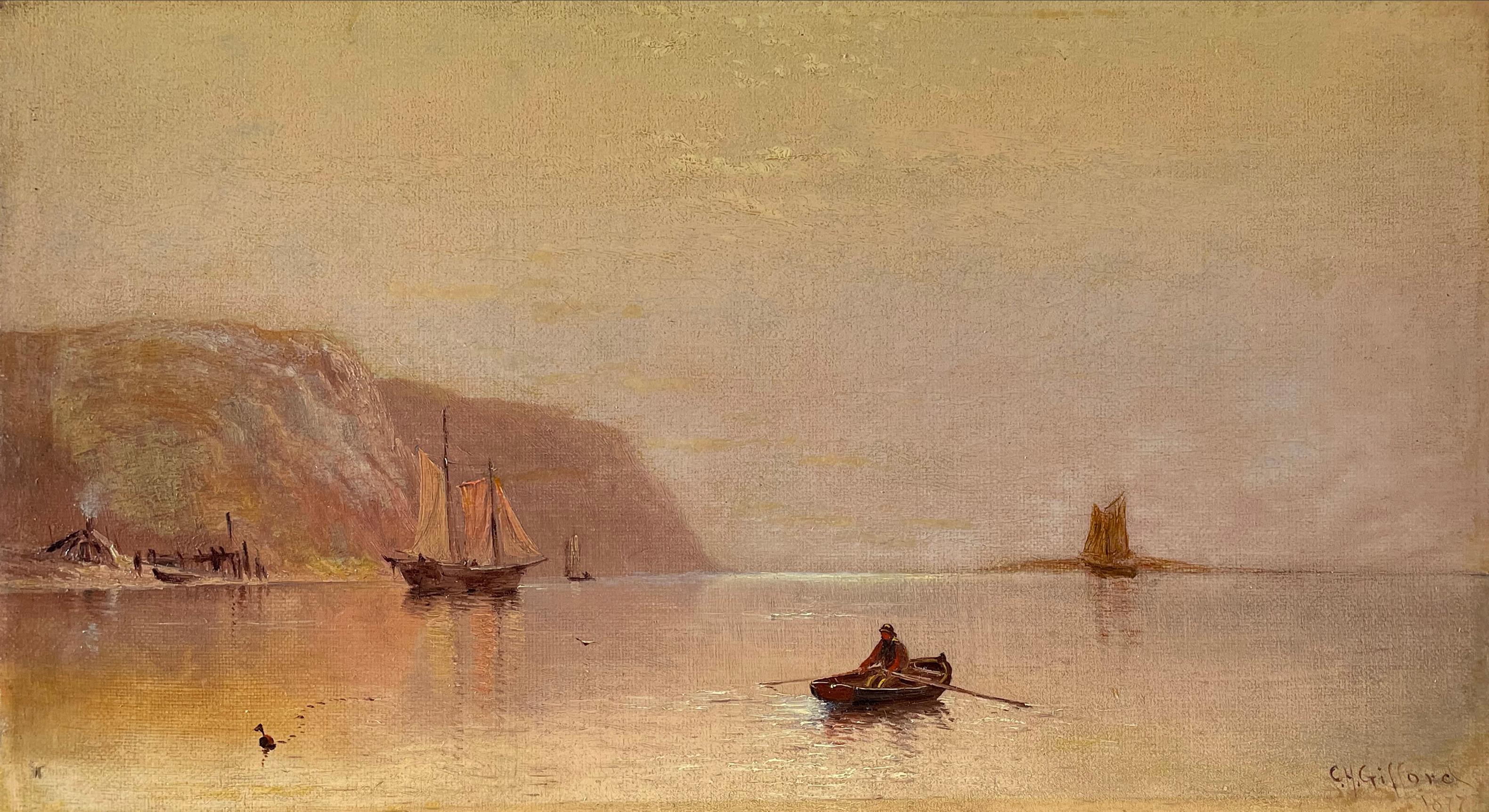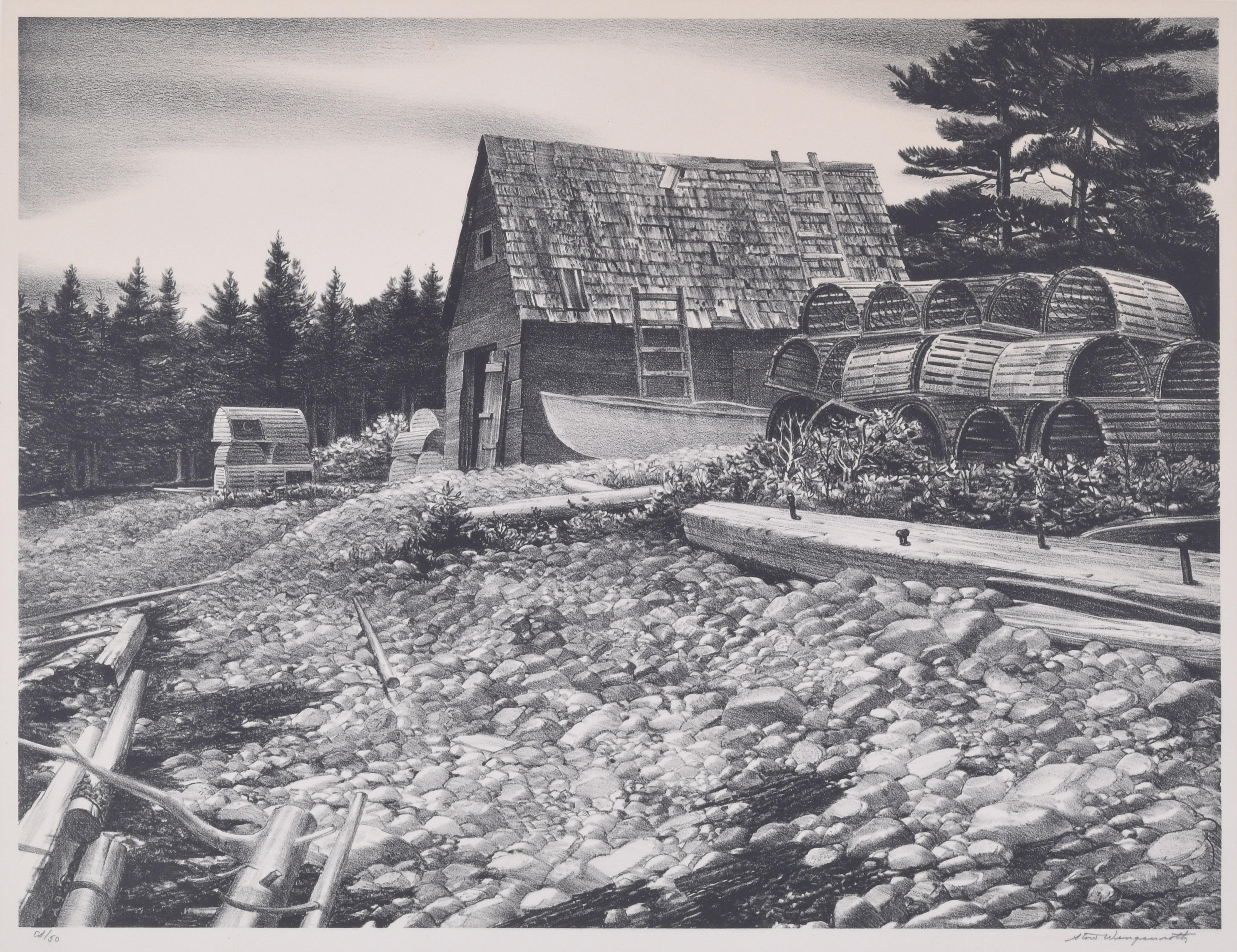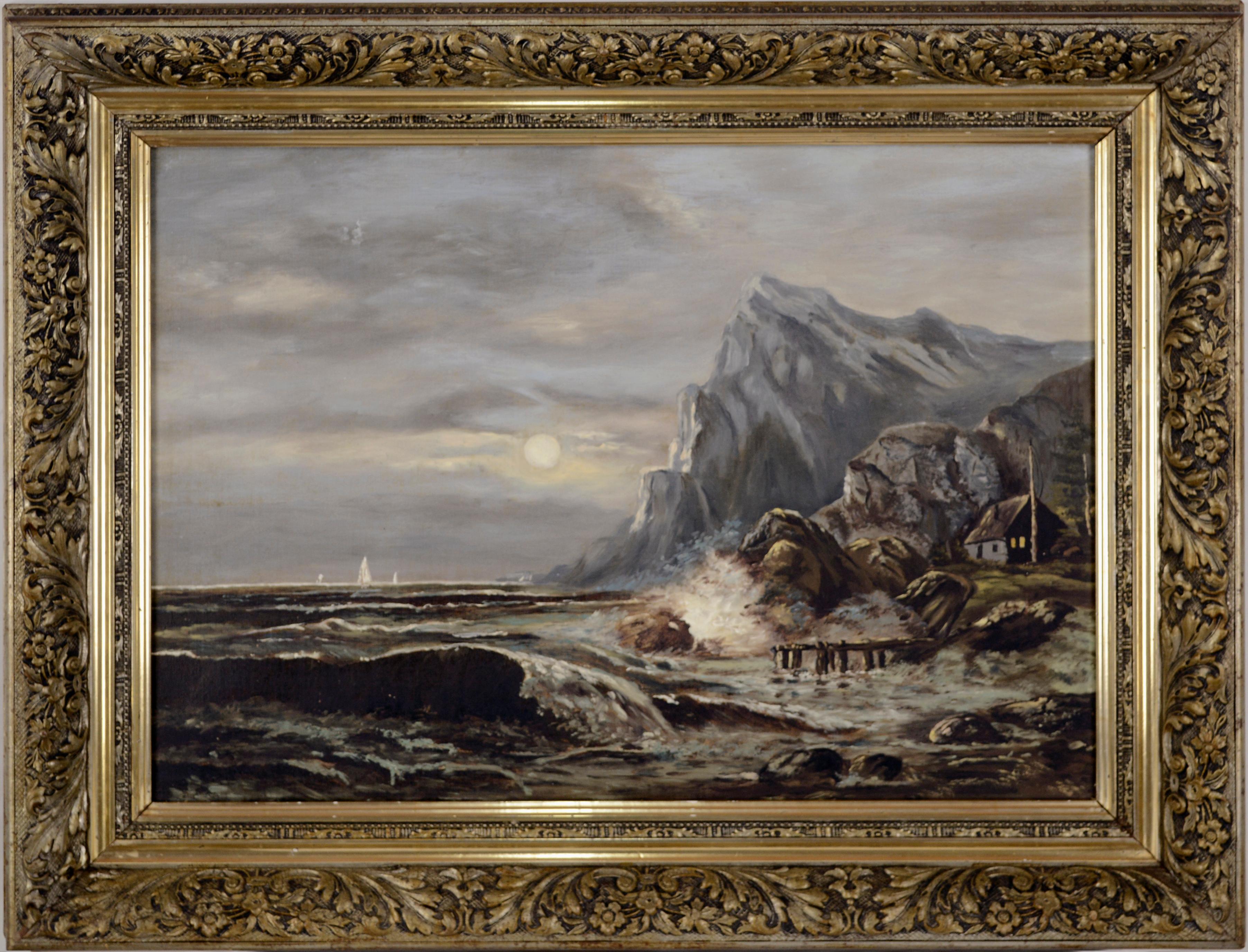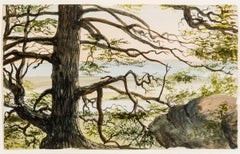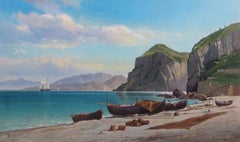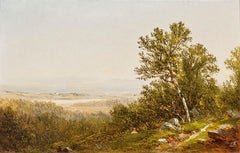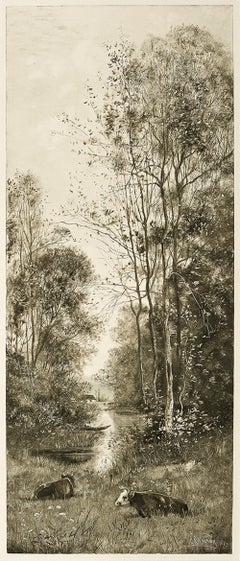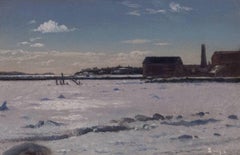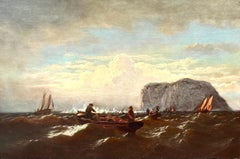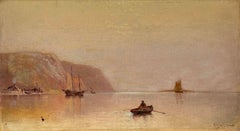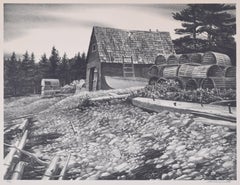Items Similar to Fishing Camp on the Labrador Coast
Want more images or videos?
Request additional images or videos from the seller
1 of 7
William BradfordFishing Camp on the Labrador CoastN.d.
N.d.
$30,000
£22,572.21
€26,078.05
CA$42,397.83
A$46,035.80
CHF 24,379.33
MX$564,267.06
NOK 301,703.76
SEK 285,094.08
DKK 194,635.89
About the Item
In 1852, twenty-nine year old William Bradford was a failing shopkeeper in Fairhaven, Massachusetts. With a wife and child at home, Bradford, by his own admission, “spent too much time in painting to succeed” in business. Rescued from insolvency by his well-to-do in-laws, this is not the beginning of a narrative that generally leads to a happy ending. Not so with Bradford, who ultimately found international fame and fortune as a painter of arctic seascapes and dramatic marine paintings.
William Bradford, the artist, was a lineal descendant of the 17th-century Separatist leader William Bradford, a founder of the Plymouth Plantation, signer of the Mayflower Compact and Governor of the Plymouth Colony. Our Bradford born to a New Bedford ship outfitter in Fairhaven, Massachusetts By the nineteenth century, this line of Bradfords were Quakers, living on the tract purchased nearly two centuries earlier by their pilgrim ancestor. Fairhaven, across the mouth of the Acushnet River from the whaling center of New Bedford was described by a New York journalist in 1857 as “the Brooklyn of New Bedford” (Home Journal, January 3, 1857). Young Bradford displayed an early predilection for the arts, but his Quaker parents were disinclined to support this particular pursuit. After working in his father’s business and then for a dry goods merchant in New Bedford, by 1849 Bradford had set up in New Bedford as a “merchant tailor” offering outfits for “those going to California,” “seamen’s clothing,” custom-tailored “piece goods” and “friend’s wear." But despite his parents’ best efforts, Bradford was an indifferent businessman, finding his passion on the shores of the New Bedford harbor, accompanied by sketch book and easel. By 1852, Bradford had determined to pursue a career as a marine painter.
Bradford would have studied books on naval architecture, marine drafting, as well as drawing instruction manuals, but more important, he closely observed the boats that crowded the wharves and waters around New Bedford. Bradford would also have benefitted by his exposure to the work of two famous marine artists working nearby, Robert Salmon and Gloucester native Fitz Henry Lane. By 1852, Bradford realized the limitations of his self-study He traveled to New York City and sought out Albert Van Beest (1820–1860), at the time the leading European marine painter in America, whom he convinced to come to Fairhaven and share a studio for two years. The two worked closely during their stay together, on several occasions collaborating on paintings. Bradford temporarily adopted Van Beest’s dramatic and expressive style, but, following their separation, he reverted to his characteristically realistic, linear approach to marine painting. Throughout his career, Bradford maintained a use of glowing light in his work that both enlivens and gives a sense of drama to his paintings, allying him with the overall painting movement now described as luminism.
While Bradford’s early practice consisted largely of ship portraits commissioned by Massachusetts ship owners, his time with Van Breest in the mid–1850s gave him new confidence and increased skill. In 1858, he contributed New Bedford Harbor at Sunset (New Bedford Whaling Museum) to the New Bedford Art Exhibition organized by his fellow townsman, Albert Bierstadt. Afterward, he accompanied Bierstadt on a sketching expedition to Newport. In 1859, Bradford left behind his provincial beginnings. Moving to Boston, he took a space in the Tremont Street Studio Building. That same year he shared an exhibition at the Williams and Everett Gallery with Gloucester native Fitz Henry Lane (1804–1865). In 1860, Bradford exhibited for the first time at the National Academy of Design in New York and took a studio in the New York Tenth Street Studio Building, which he maintained as his winter headquarters with a few interruptions until 1877.
Bradford was among the first painters to employ extensively the use of photography in his work. On his several trips to the Arctic he documented his travels by taking numerous photographs. For the most celebrated of his expeditions, a trip in 1869 to the Arctic regions, Bradford left in a ship equipped with a full photographic studio. Upon his return, he drew inspiration from the many photographs he had taken, although he seems never to have copied any of his photographs directly into paintings. He instead used photography to familiarize himself with particular details of Arctic scenery, which he then translated to his canvases.
Following his arctic voyage of 1869, Bradford spent 1872 and 1873 in England. As had many of his marine-painter forebears, Bradford found favor with the English court. He was received by Queen Victoria and exhibited some of the approximately 700 photographs taken during the expedition. The Queen was apparently impressed, for she gave Bradford the most significant commission of his career. He painted The Panther off the Coast of Greenland under the Midnight Sun (coll. H.R.H. Queen Elizabeth II, London), which the Queen subsequently installed in her library at Windsor Castle. Following the successful reception of his photographs at court, Bradford determined to publish them along with a recounting of the voyage in a single volume. In 1873, he released The Arctic Regions, a huge volume which contained 125 hand-tipped photographs. Queen Victoria was its first subscriber. Contemporary reviews of The Arctic Regions were extremely favorable, which helped establish Bradford’s reputation as a painter. Bradford’s English audience, conditioned by the “truth to nature” art aesthetic of the influential critic, John Ruskin, appreciated the verisimilitude of his work. His paintings were seen as “the only works which profess incontrovertible truth in the representation of the northern regions” (“The Arctic Regions,” The Art Journal (London) XII [1873]).
By the late 1870s, Bradford was enormously successful. He moved west to California and established a studio in San Francisco. He painted such familiar West Coast landscapes as Mount Hood and Yosemite, much the same as his friend Albert Bierstadt, with whom Bradford earlier had shared space in New York’s Tenth Street Studio. In the late 1880s he returned east, where he continued to paint until his death in 1892.
- Creator:William Bradford (1823-1892, American)
- Creation Year:N.d.
- Dimensions:Height: 13.25 in (33.66 cm)Width: 20.5 in (52.07 cm)
- Medium:
- Movement & Style:
- Period:
- Condition:
- Gallery Location:New York, NY
- Reference Number:Seller: APG 20199D1stDibs: LU2310062422
About the Seller
5.0
Recognized Seller
These prestigious sellers are industry leaders and represent the highest echelon for item quality and design.
Established in 1952
1stDibs seller since 2010
35 sales on 1stDibs
Typical response time: 7 hours
Associations
Art Dealers Association of America
- ShippingRetrieving quote...Shipping from: New York, NY
- Return Policy
Authenticity Guarantee
In the unlikely event there’s an issue with an item’s authenticity, contact us within 1 year for a full refund. DetailsMoney-Back Guarantee
If your item is not as described, is damaged in transit, or does not arrive, contact us within 7 days for a full refund. Details24-Hour Cancellation
You have a 24-hour grace period in which to reconsider your purchase, with no questions asked.Vetted Professional Sellers
Our world-class sellers must adhere to strict standards for service and quality, maintaining the integrity of our listings.Price-Match Guarantee
If you find that a seller listed the same item for a lower price elsewhere, we’ll match it.Trusted Global Delivery
Our best-in-class carrier network provides specialized shipping options worldwide, including custom delivery.More From This Seller
View AllHemlock--Selden's Neck, Lyme, Connecticut
By Charles De Wolf Brownell
Located in New York, NY
Framed, 5.25 x 8.5 x 1.5 in.
Category
19th Century American Realist Landscape Drawings and Watercolors
Materials
Watercolor
Marina Grande, Capri
By Charles Temple Dix
Located in New York, NY
Charles Temple Dix was born in Albany, New York, the youngest son of the distinguished statesman and soldier, General John Adams Dix. Having already visited Europe as a child, Dix re...
Category
19th Century American Realist Landscape Paintings
Materials
Canvas, Oil
Figure in a Landscape
By David Johnson
Located in New York, NY
Signed (at lower right): DJ [monogram]; (on back): David Johnson 1865
Category
Mid-19th Century American Realist Landscape Paintings
Materials
Oil, Board
Brookside
Located in New York, NY
Signed (at lower right): C A Walker
Category
Late 19th Century American Realist Landscape Prints
Materials
Monotype
Saint-Malo, Brittany
By William Stanley Haseltine
Located in New York, NY
The career of William Stanley Haseltine spans the entire second half of the nineteenth century. During these years he witnessed the growth and decline of American landscape painting, the new concept of plein-air painting practiced by the Barbizon artists, and the revolutionary techniques of the French Impressionists, all of which had profound effects on the development of painting in the western world. Haseltine remained open to these new developments, selecting aspects of each and assimilating them into his work. What remained constant was his love of nature and his skill at rendering exactly what he saw. His views, at once precise and poetic, are, in effect, portraits of the many places he visited and the landscapes he loved.
Haseltine was born in Philadelphia, the son of a prosperous businessman. In 1850, at the age of fifteen, he began his art studies with Paul Weber, a German artist who had settled in Philadelphia two years earlier. From Weber, Haseltine learned about Romanticism and the meticulous draftsmanship that characterized the German School. At the same time, Haseltine enrolled at the University of Pennsylvania, and took sketching trips around the Pennsylvania countryside, exploring areas along the Delaware and Susquehanna rivers. Following his sophomore year, Haseltine transferred to Harvard University.
After graduating from Harvard in 1854, Haseltine returned to Philadelphia and resumed his studies with Weber. Although Weber encouraged Haseltine to continue his training in Europe, the elder Haseltine was reluctant to encourage his son to pursue a career as an artist. During the next year, Haseltine took various sketching trips along the Hudson River and produced a number of pictures, some of which were exhibited at the Pennsylvania Academy of the Fine Arts in the spring of 1855. Ultimately, having convinced his father that he should be allowed to study in Europe, Haseltine accompanied Weber to Düsseldorf.
The Düsseldorf Academy was, during the 1850s, at the peak of its popularity among American artists. The Academy’s strict course of study emphasized the importance of accurate draftsmanship and a strong sense of professionalism. Landscape painting was the dominant department at the Düsseldorf Academy during this period, and the most famous landscape painter there was Andreas Achenbach, under whom Haseltine studied. Achenbach’s realistic style stressed close observation of form and detail, and reinforced much of what Haseltine had already learned. His Düsseldorf training remained an important influence on him for the rest of his life.
At Düsseldorf, Haseltine became friendly with other American artists studying there, especially Emanuel Leutze, Worthington Whittredge, and Albert Bierstadt. They were constant companions, and in the spring and summer months took sketching trips together. In the summer of 1856 the group took a tour of the Rhine, Ahr, and Nahe valleys, continuing through the Swiss alps and over the Saint Gotthard Pass into northern Italy. The following summer Haseltine, Whittredge, and the painter John Irving returned to Switzerland and Italy, and this time continued on to Rome.
Rome was a fertile ground for artists at mid-century. When Haseltine arrived in the fall of 1857, the American sculptors Harriet Hosmer, Chauncey B. Ives, Joseph Mozier, William Henry Rinehart...
Category
19th Century American Realist Landscape Paintings
Materials
Canvas, Oil
Winter on the River
By Randall Exon
Located in New York, NY
Signed and dated (at lower right): 2011
Category
2010s Contemporary Landscape Paintings
Materials
Oil
You May Also Like
Fairhaven Harbor (Old Tack Works Wharf)
By William Bradford
Located in New York, NY
Signed lower right: Bradford
Category
19th Century Hudson River School Landscape Paintings
Materials
Oil, Paper, Board
Fishing Boats Off the Coast in Bass Rock, Scotland
By William Bradford
Located in Fredericksburg, VA
This luminous maritime scene by American painter William Bradford captures a fleeting moment of daily life along the rugged coast of Bass Rock, Scotland. Known for his vivid Arctic e...
Category
Mid-19th Century Romantic Landscape Paintings
Materials
Canvas, Oil
View at Dawn
By Charles Henry Gifford
Located in Bryn Mawr, PA
View at Dawn, 1877
Oil on canvas, 7 1/8 x 12 5/8 inches (18 x 32 cm)
Framed dimensions: 12 x 17 inches
Signed and dated lower right: C.H. Gifford / 1877
Charles Henry Gifford was bo...
Category
19th Century Hudson River School Landscape Paintings
Materials
Canvas, Oil
Lobsterman's Cove, Winter Harbor, Maine
By Stow Wengenroth
Located in Fairlawn, OH
Lobsterman's Cove, Winter Harbor, Maine
Lithograph, 1941
Signed in pencil lower right (see photo)
Edition 50
Impressions are in the collection of the Pennsylvania Academy of the Fine...
Category
1940s American Realist Landscape Prints
Materials
Lithograph
"Grand Manan" Harrison Bird Brown, Maine Landscape, Hudson River School Seascape
By Harrison Bird Brown
Located in New York, NY
Harrison Bird Brown (1831 - 1915)
Grand Manan
Oil on canvas
12 x 20 inches
Signed with initials lower left
Harrison Bird Brown was born in 1831 in Portland, Maine, and is best known for his White Mountain landscapes and marine paintings of Maine's Casco Bay...
Category
Late 19th Century Hudson River School Landscape Paintings
Materials
Canvas, Oil
Autumnal San Francisco Cove and Surf with Whalers Shack circa 1900
Located in Soquel, CA
Autumnal San Francisco Cove and Surf with Whalers Shack circa 1900
Early California Tonalist painting of the San Francisco Coast and a Whalers Cabin. Possibly by D.A. Fisher (American, 1867-1940). Nocturnal paintings in the late 19th century were very popular in the United States. Condition is stellar and excellent with a period frame having a bit of age yellowing to the finish and the gold leaf filets are beaming.
Image, 16"H x 22"D
Frame, 22"H x 28"W x 2.5"D
Fisher appears to have spent most of his career in Portland, Maine. He was an itinerant artist who painted in the San Francisco Bay area in 1891 and at Mount Shasta...
Category
1890s Tonalist Landscape Paintings
Materials
Linen, Oil
More Ways To Browse
19th Century Painting Fishing
The Mayflower
Ship Portrait
New Bedford Antique
Arctic Painting
Midnight Sun
Antique Labrador
Mayflower Antique
Labrador Painting
Fitz Henry Lane
Robert Salmon
Contemporary French Landscape Painting
Mid Century Paris Street Scene
Grand Canyon
Dutch Landscape Paintings
Landscape Horses Oil
Arizona Painting
Impressionist French Painting 1930
